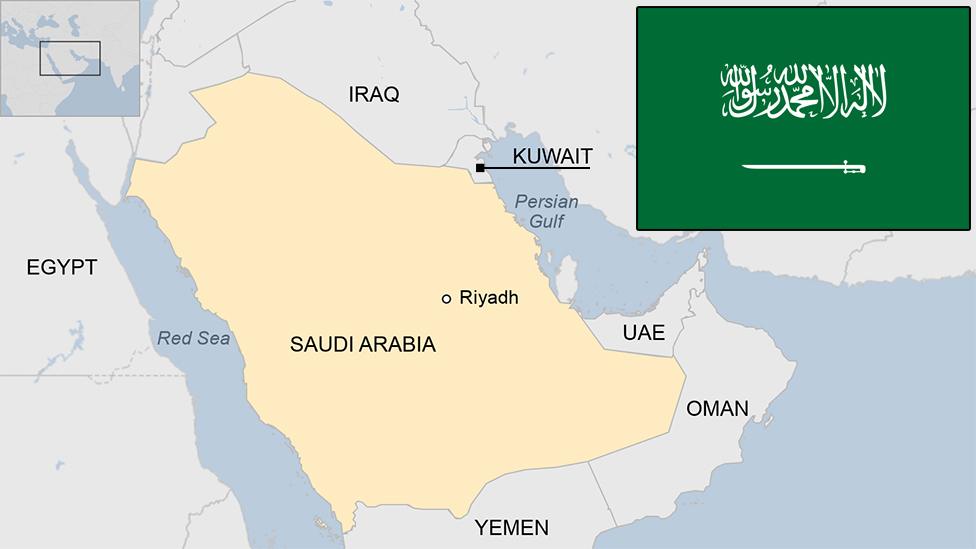Hajj stampede: What we know so far
- Published

Muslim pilgrims walk to the Jamarat pillars to symbolically throw stones at the devil
More than 750 people have been killed and more than 900 injured in a stampede during the annual Hajj near the holy city of Mecca.
Saudi Arabia has launched an investigation into how the tragedy happened, but here is what we know so far.
When and where did it happen?
Saudi civil defence officials say that the crush happened at about 09:00 local time (06:00 GMT) on Thursday at the intersection of streets 204 and 223 in Mina, a large valley about three miles east of Mecca.
Pilgrims had been walking from a tented area towards a large structure overlooking the Jamarat pillars where the symbolic stoning of the devil is carried out.
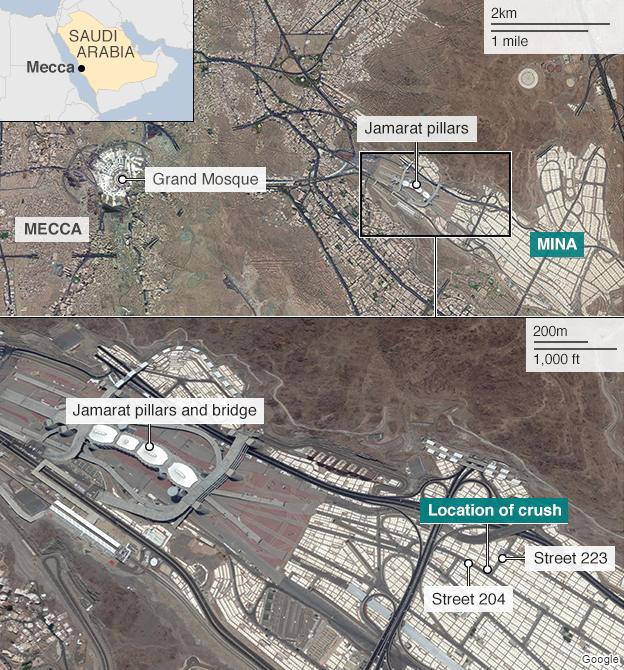
What caused the crush?
A spokesman for the Saudi interior ministry, Maj Gen Mansour al-Turki, said initial reports indicated that two crowds coming from opposite directions converged at the intersection of streets 204 and 223 and people started to push and to shove.
What is not yet clear is how that could have happened. Some unconfirmed accounts say a nearby street or path had been closed, forcing those heading to the ritual site to use the same route as those leaving.
Saudi Arabia's Foreign Minister Adel al-Jubeir has vowed that if mistakes were made, those who made them would be held accountable.
But Saudi Health Minister Khaled al-Falih appeared to lay at least some of the blame on the pilgrims themselves, suggesting some had "moved without following instructions by the relevant authorities".
Iran has called on the Saudi government to accept responsibility and apologise for the disaster.
Witnesses said temperatures were very hot at the time, which may have contributed to the panic.
The street where the crush happened is said to be about 12m (36ft) wide with tall gates on both sides, behind which are the tents of Hajj tour groups.
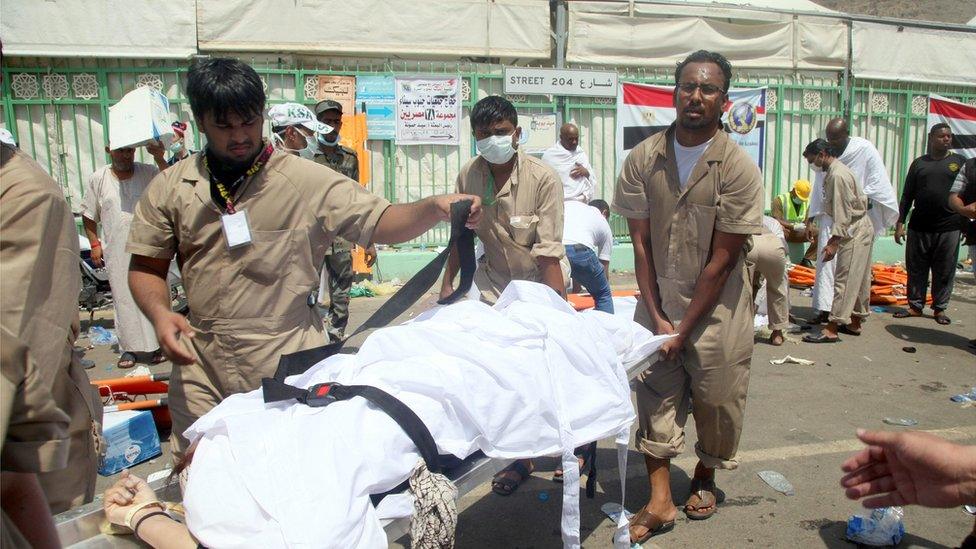
The stampede occurred in a street between the many tents at the Hajj
Where were the victims from?
The Saudi authorities have not yet provided a breakdown of the nationalities of the 769 pilgrims they say were killed in the stampede, but several countries have announced the deaths of their citizens.
Iran appears to have lost the largest number of pilgrims.
Deaths and missing persons reported by nationality:
Iran: 464 dead
Egypt: 75 dead, 94 missing
Nigeria: 64 dead, 244 missing
Indonesia: 57 dead, 78 missing
Mali: 60 dead
India: 45 dead
Pakistan: 40 dead, more than 60 missing
Niger: 22 dead
Cameroon: at least 20 dead
Ivory Coast: 14 dead, 77 missing
Chad: 11 dead
Algeria: 11 dead
Somalia: 8 dead (media reports)
Senegal: 10 dead
Morocco: 10 dead, 29 missing
Libya: 4 dead, 16 missing
Tanzania: 4 dead
Kenya: 3 dead
Tunisia: 2 dead
Burkina Faso: 1 dead
Burundi: 1 dead
Netherlands: 1 dead
Other nationalities (numbers not yet known): Benin
Saudi Arabia has also sought to clarify confusion about how many people died. Officials from various countries said they had seen identification photographs for some 1,100 corpses but the Saudis say the photo collection included everyone who died at the Hajj - not just the stampede victims.

This man in Ahmedabad, India, was told his relatives were among the dead
What safety procedures are in place for the Hajj?
Saudi authorities have spent billions of dollars on improving transport and other infrastructure to try to prevent deadly incidents at the Hajj.
Could tragedy have been prevented?
The crush happened away from the five-storey Jamarat Bridge which was completed in 2007 at great expense and was intended to improve safety.
About 5,000 security cameras are in place around Mecca and Medina and Saudi authorities deployed about 100,000 security personnel for this year's event.
Faced with growing numbers for the annual Hajj, Saudi Arabia has also been working for four years on an enlargement at the Grand Mosque.
However, it was there earlier this month that a crane toppled over during a storm, killing more than 100 people.
- Published25 September 2015
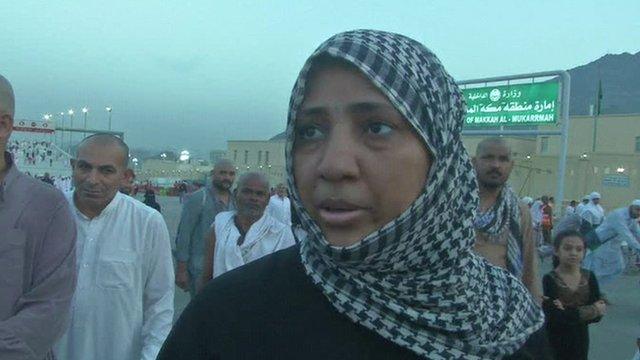
- Published25 September 2015
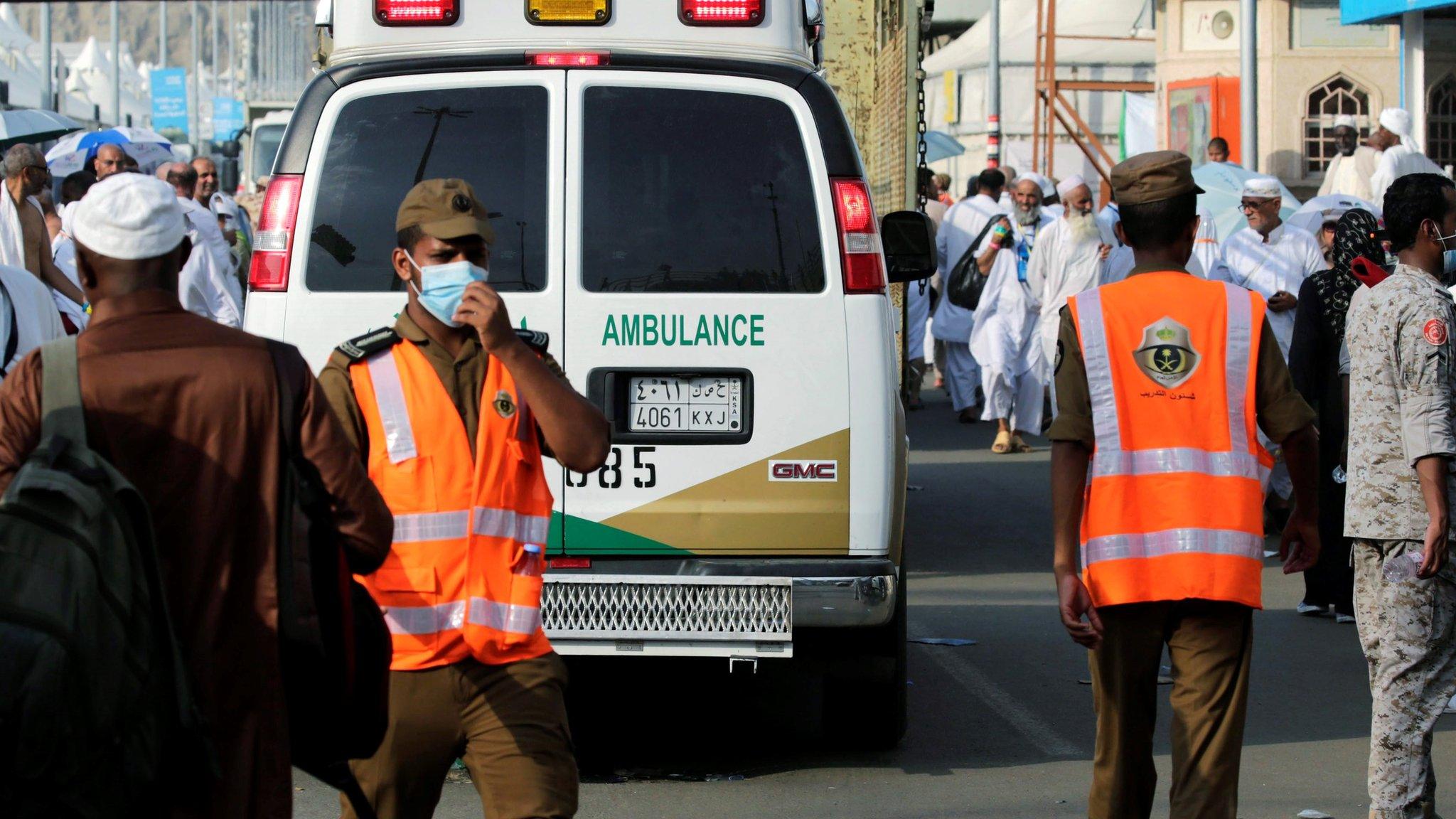
- Published25 September 2015

- Published25 September 2015

- Published24 September 2015

- Published24 September 2015
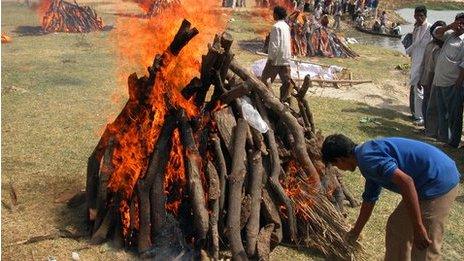
- Published24 September 2015
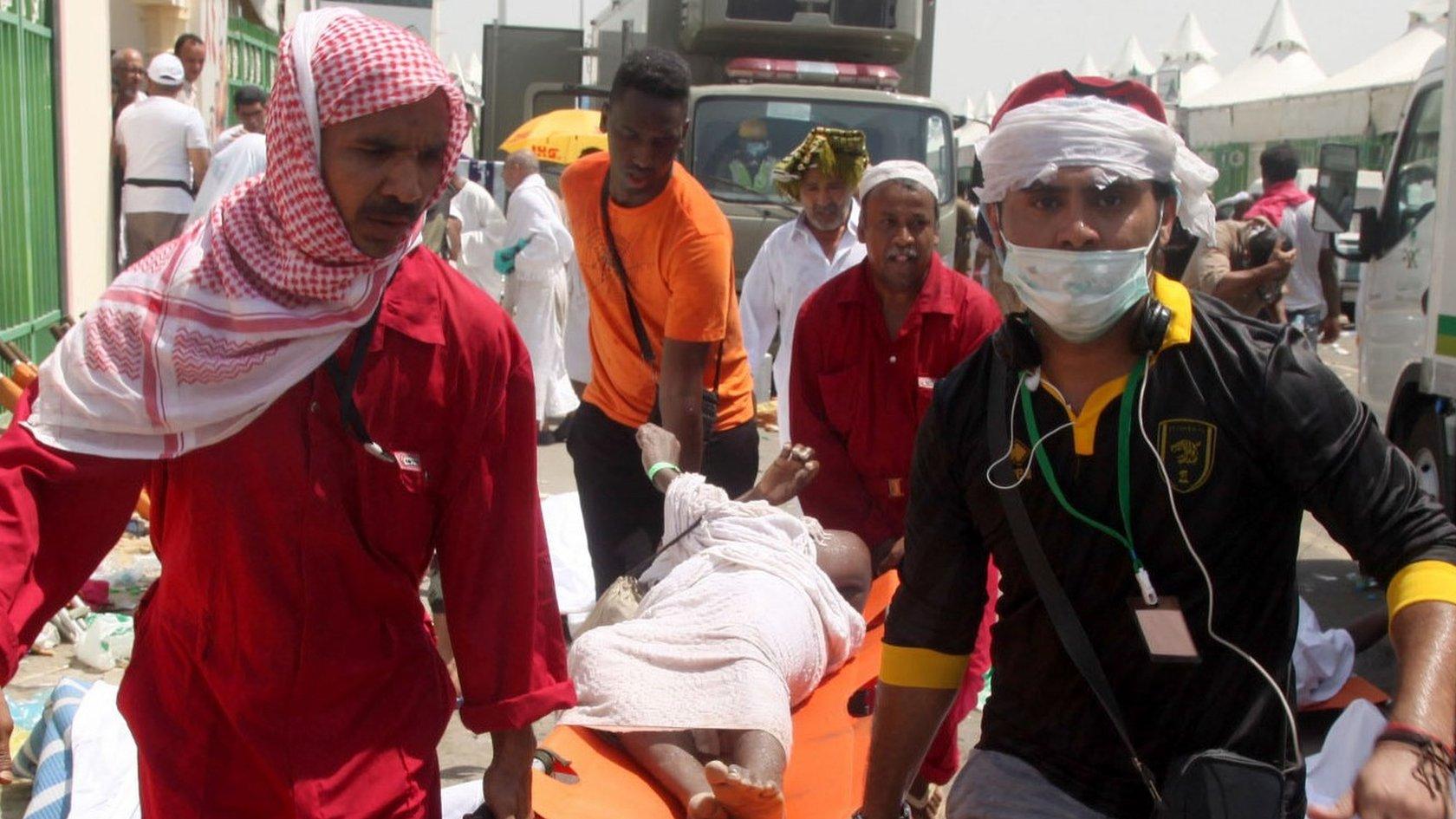
- Published24 September 2015
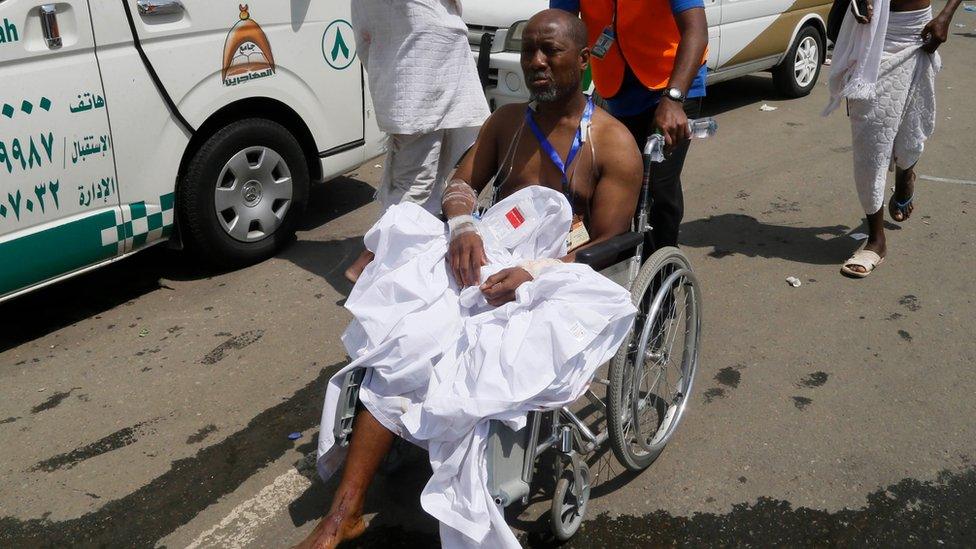
- Published24 September 2015
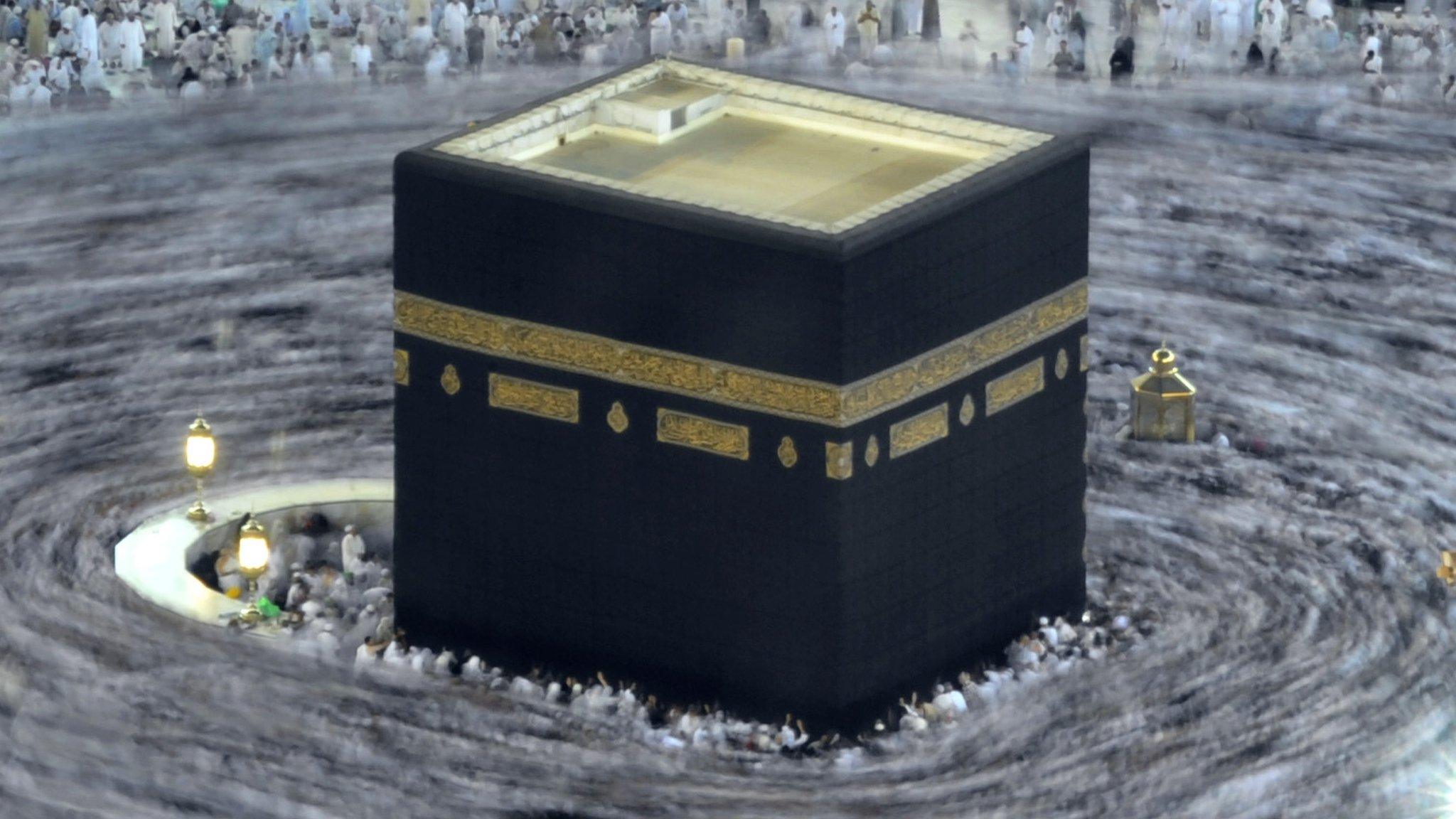
- Published24 September 2015
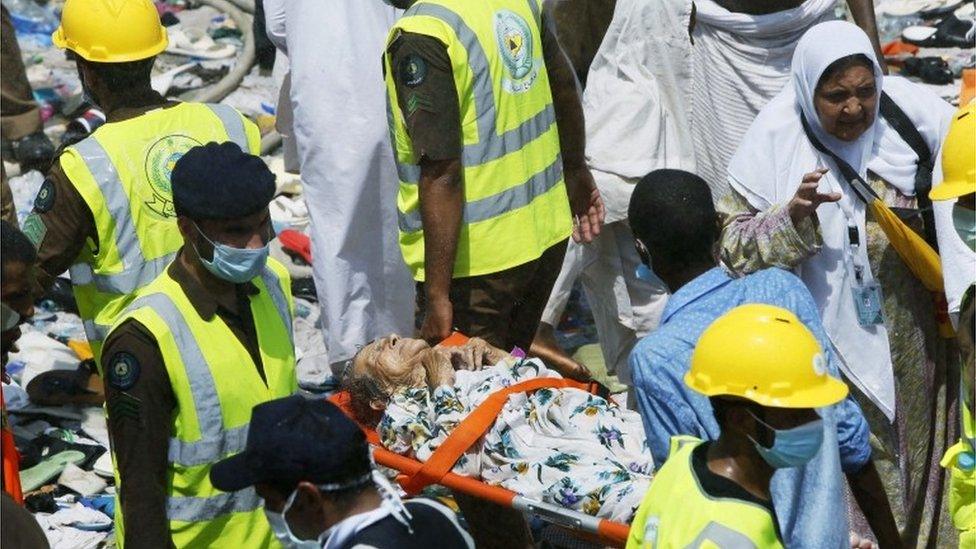
- Published12 September 2015
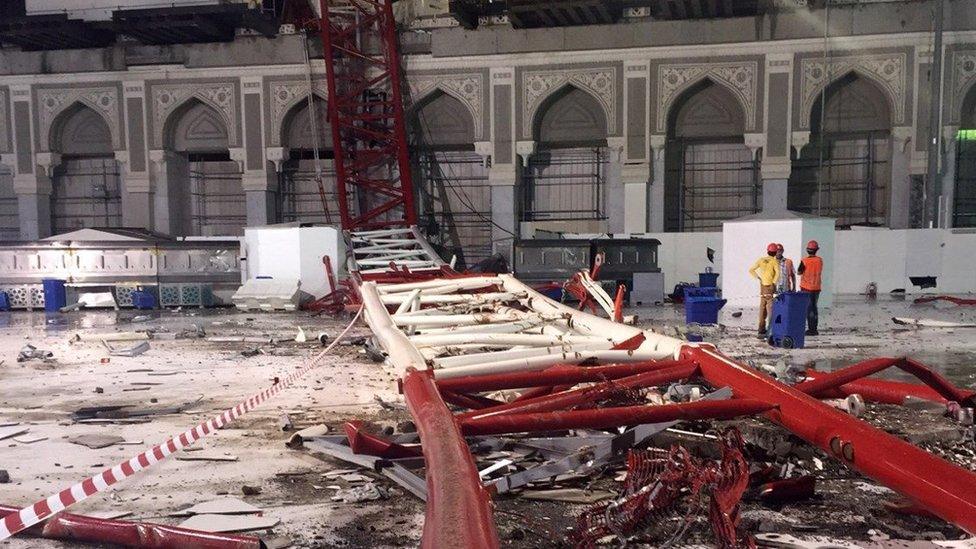
- Published29 August 2023
